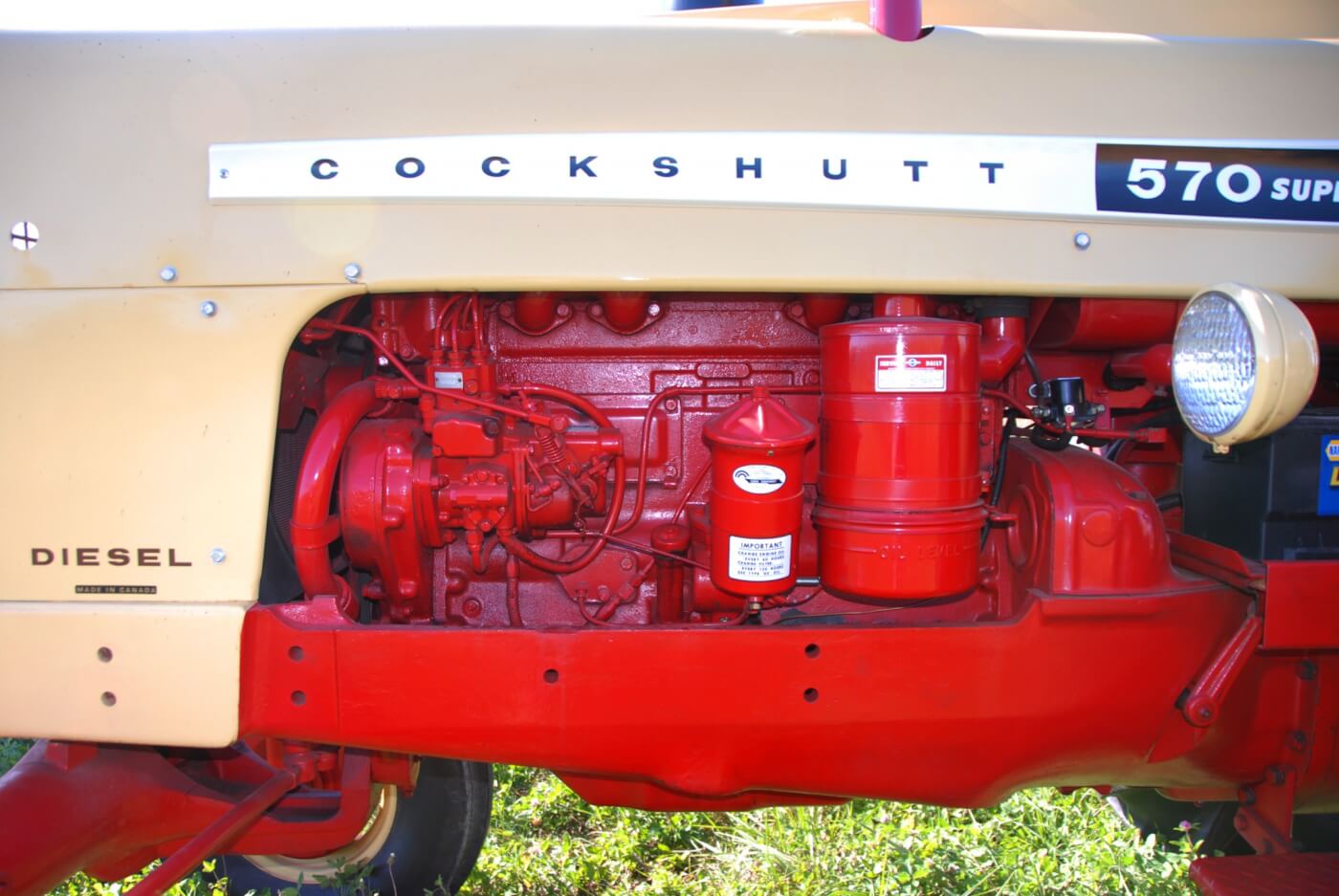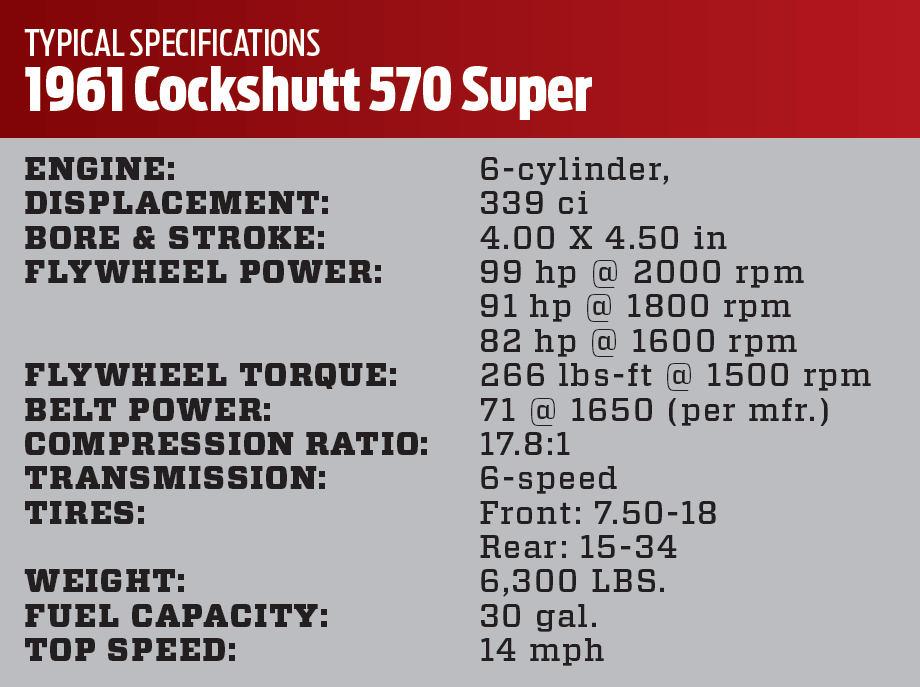The 1961 Canadian Cockshutt 570 Super
Canada isn’t generally known for her tractors, but one Canadian tractor manufacturer made a mark on the world: Cockshutt. The company started in 1882, when James Cockshutt formed the Cockshutt Plow Company in Brantford, Ontario. The company rapidly expanded into many other areas of agricultural manufacturing, retaining Cockshutt family leadership throughout. Their lines of tillage equipment were second to none, but by the early 1920s, the company saw an increasing need to offer a line of tractors. They weren’t up to building one in house at that time but began selling rebadged tractors in 1928, bought first from Allis-Chalmers and later Oliver. This continued up to World War II when a great deal of Cockshutt’s manufacturing capacity was turned over to various war production.
Their lines of tillage equipment were second to none.
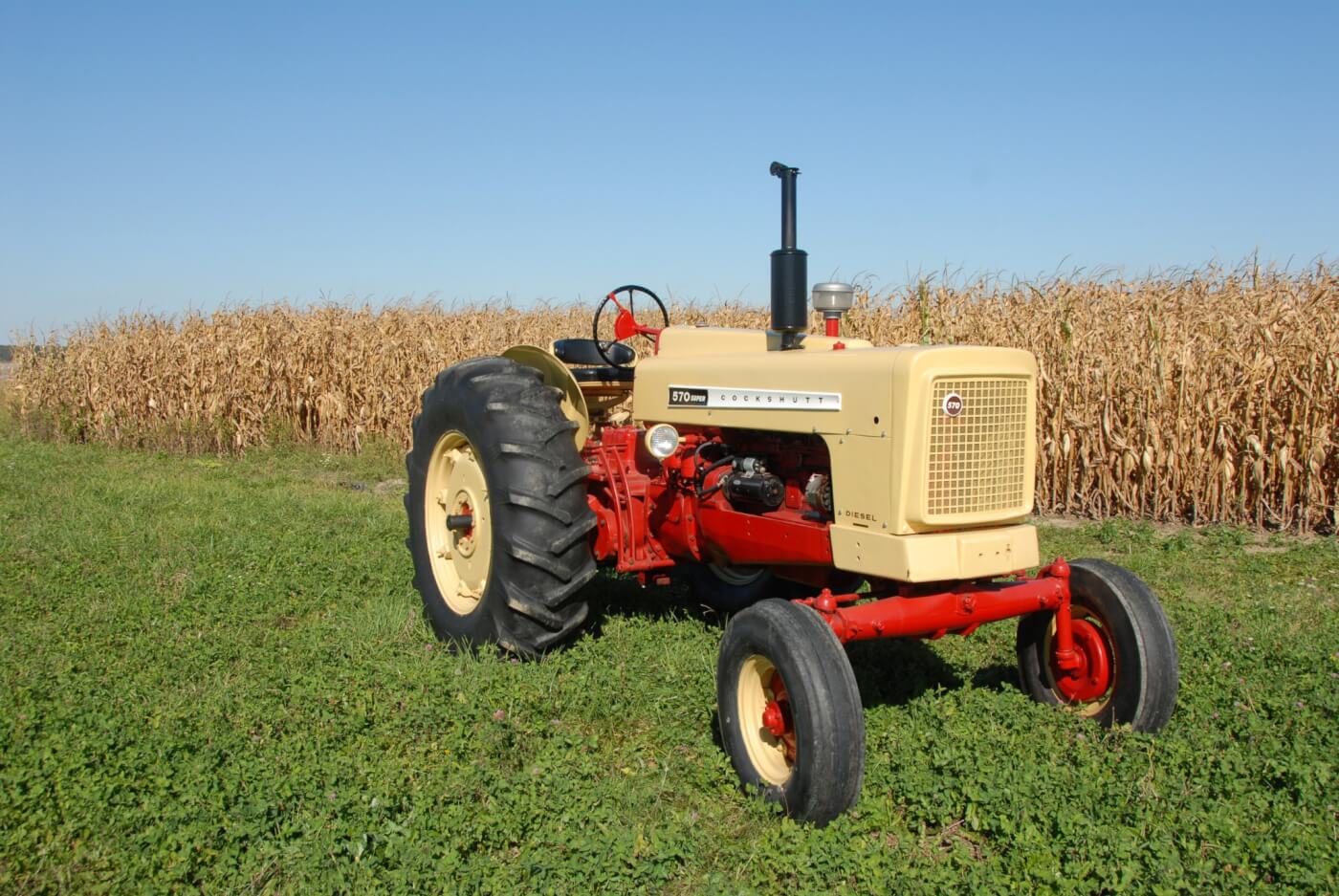
POST WAR PRODUCTION
As the war wound down, the managers at Cockshutt had a big decision to make. Did they ramp up to build their own tractors in-house or continue buying rebadged tractors from Oliver or some other manufacturer in the United States? By this time, they had a new foundry and some technical expertise in tractor design available. Management pulled the trigger on a new line of in-house tractors, and in 1946 debuted the Cockshutt 30. This tractor was just the first, and Cockshutt added new tractors as rapidly as possible, filling the gaps with rebadged Olivers. Gradually, by the mid 1950s, they had a full Cockshutt-built lineup.
Early on, Cockshutt pioneered a feature that became universal in tractors all over the world… live PTO. “Live” means that the PTO system can operate in concert with—or independent of—the drivetrain. The Cockshutt 30 also offered one of the earliest live hydraulic systems. Unlike some companies where diesel power was an afterthought, Cockshutt presented diesel power as the top of the line. Cockshutt tractors soon acquired a strong following in Canada and even in export markets, including the United States.
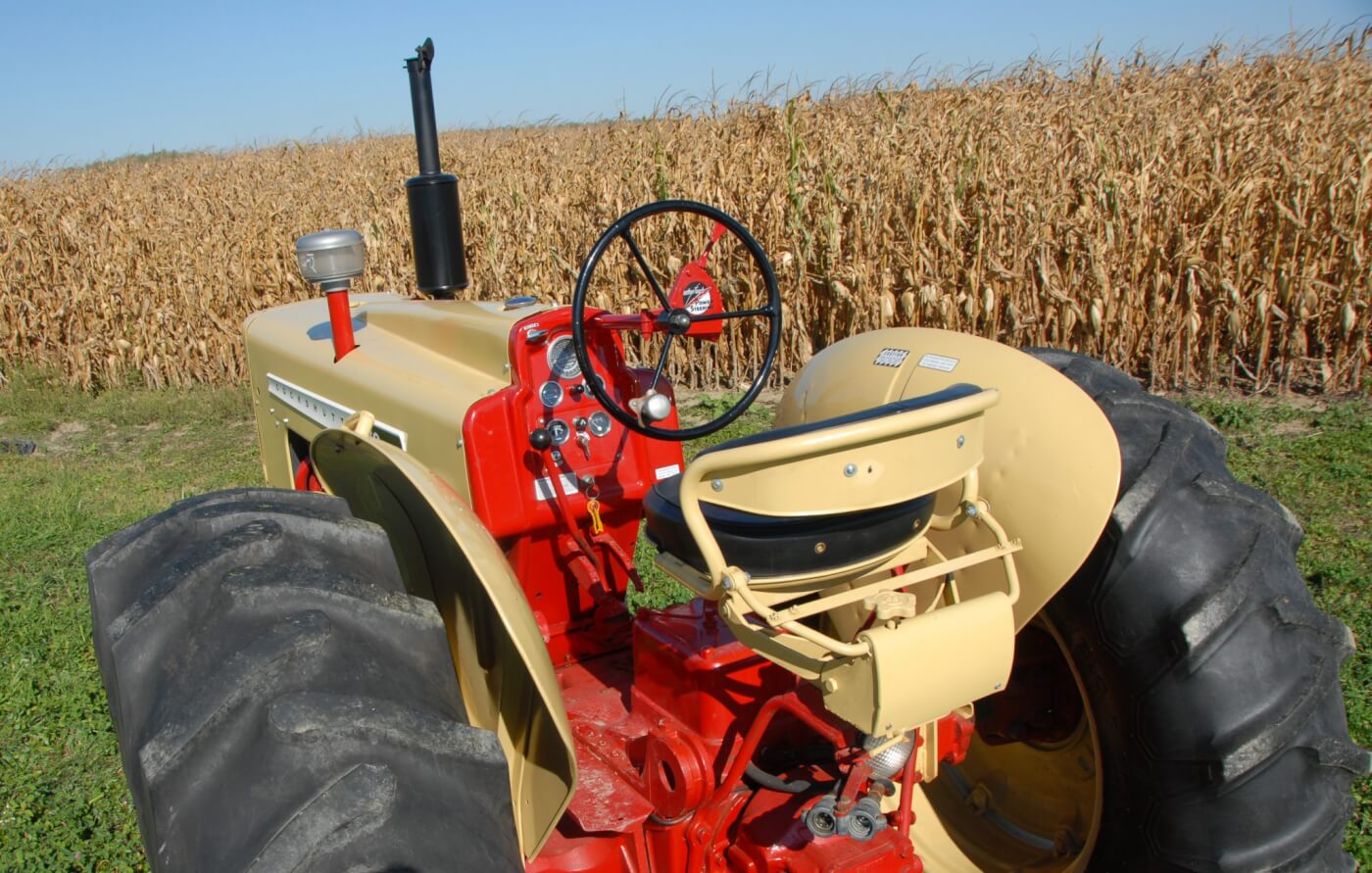
THE 500 SERIES
By the late ‘50s, the business world had changed a lot. Not less so on the agricultural side of it. The smaller family-run companies struggled against the financial resources of the giant consortiums. Still, in 1958, Cockshutt introduced a new line of tractors: the 500 series. The 540, 550, 560 and 570 had a fresh, angular look from renowned designer Raymond Loewy and a new line of engines to boot. Buda had been one of Cockshutt’s major diesel engine suppliers, but when they were absorbed by Allis Chalmers in early ’50, they were gradually phased out, leaving a number of customers in the lurch. Cockshutt turned to Continental, Hercules, and Perkins for their gas and diesel powerplants, and that changeover was complete by the time the 500 line debuted.
The 570 was Cockshutt’s only six-cylinder tractor in the 500 line. Powered by a 298 ci Hercules six (gas or diesel) the diesel version was rated at the Nebraska Tractor test lab at 61 belt horsepower and 52 drawbar ponies. By the time 1960 neared, the company saw the need for a more powerful tractor and began developing one. It was an easy answer: They simply replaced the 298 ci Hercules with a larger 339 ci six and, voila, the 570 Super was born, but it was only offered with a diesel engine.
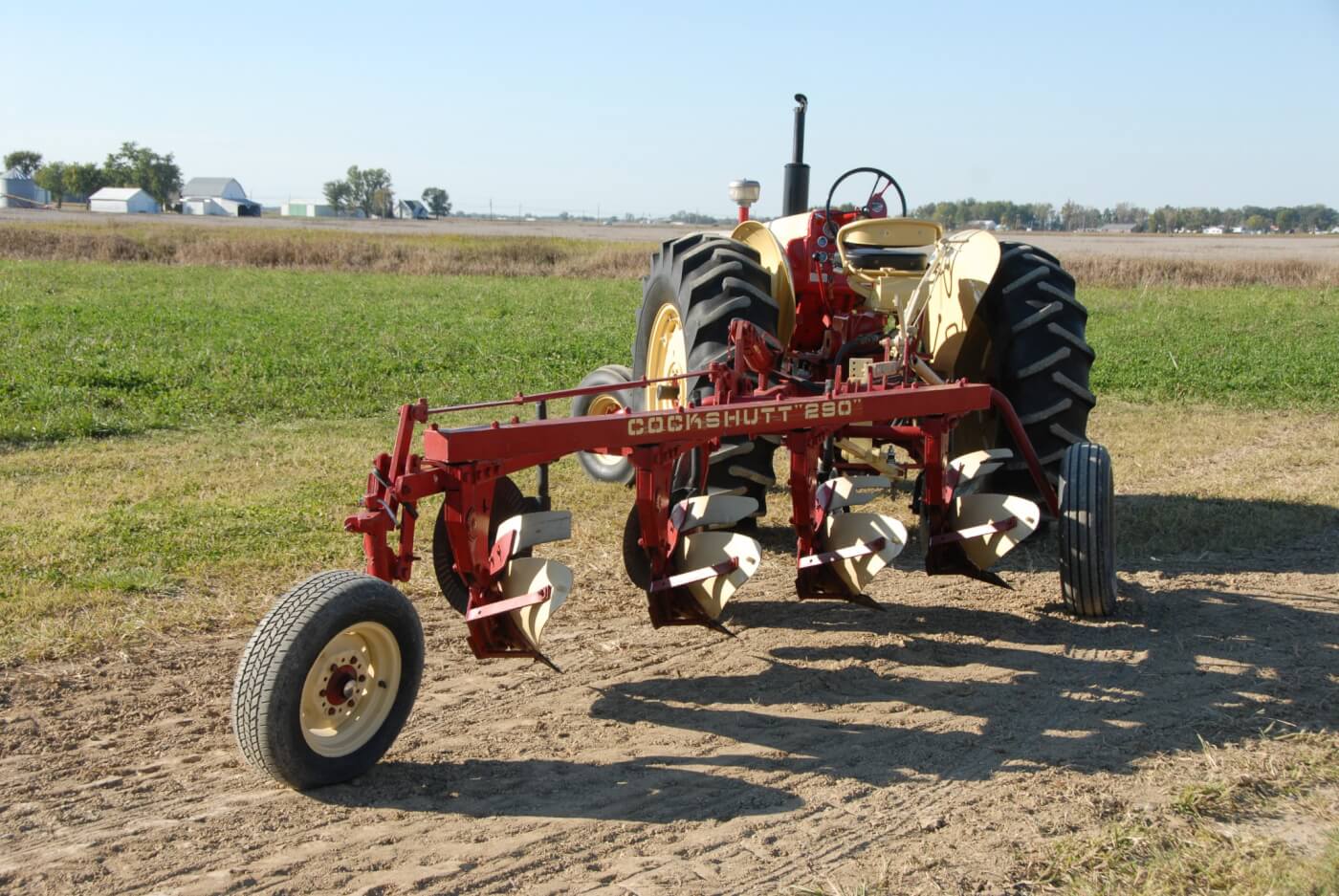
HERCULES
The Hercules diesels were a staple in the industrial engine world. They were a commonly found marine engine and versions of them powered a good many military trucks of the ‘50s and ‘60s. The D339 was in the same family as the D298 that had powered the 570. It was virtually the same engine, but with a quarter-inch larger bore and some tweaking on the Bosch injection pump.
The 298 and 339 were in a family of modular Hercules engines that debuted in 1958. The 298 shared the same architecture with a 198 ci four, the D198 (that had the same bore and stroke of 3.75×4.5 inches) and powered the Cockshutt 40 hp 550. The D298 and D198 were dry-sleeved engines.
Cockshutt pioneered a feature that became universal in tractors all over the world… live PTO.
For ’61, Hercules debuted the D339, which shared the same stroke as the D298 but a quarter in more bore from the elimination of the dry sleeve and likely a bit of overbore to boot. The D339 outpowered the 298 by about 11 hp at the common 1600-rpm tractor rating and by 16 lbs-ft. at 1,500 rpm.
Like all in this family of engines, the blocks were exactly the same at either end, allowing for a great many variations, not the least of which was the ability to mount injection pumps on either side of the engine. True to one of the mainstay markets, the Hercules engines could be ordered for clockwise or counter-clockwise operation for twin engine boats. Among many other possible variations, there were several crankshafts available. We don’t have a complete list, but it looks like the rod journals were offered in 2, 2.37 and 2.5-inch diameters and the mains in 2.5 and 2.87 inches. With a combination of the 2.5-inch rods and 2.87-inch mains, the engine designation got a “H” suffix for a heavy-duty crankshaft.
The D339 is a close cousin to the later D3400 White/Hercules engines, as the D3000 is of the D298. They were very much an evolution, but they weren’t a huge one. The heads got individual ports for all cylinders in the later engines, but that didn’t amount to much in the power ratings. A D3400TA (turbo aftercooled) was the most powerful version listed, and it was rated at 116 hp at 1,800 rpm, probably near 150 hp in the higher rpm ranges. By the time that engine had debuted, the Hercules engine company’s fortunes were on the decline, and you didn’t see them outside industrial, marine or stationary applications. Among the few powered vehicle uses for Hercules engines in the later years was for engine conversions in commercial trucks; we saw one rated at 110 hp @ 2,600 rpm for a D3000 NA diesel.
Hercules shut the doors in 1999 but had built the D3000 and D3400 pretty much to the end. Parts are much less common than other brands, but one company, Hercano Propulsion, has specialized in Hercules, having bought the majority of Hercules’ remaining parts stocks.
The 570 and 570 Super shared a similar drivetrain to the six-cylinder 50 series that preceded them, but with some beefing and simplification. It remained a six-speed fully manual gearbox with two reverse gears. Except for a few early models, most of the 570 Supers had a transmission gear ratio change with ratios that were a little lower than the 570 models.
The 570 and 570 Super were offered as Standard fixed-tread or adjustable-tread Rowcrop tractors. While the 570 was built with a narrow front end, it isn’t clear if the Super was offered that way. By way of other legacy options, the 570 Super did offer a port for an external belt drive PTO in addition to the more modern optional 540 rpm rear shaft PTO.
The 570 Super was the last Cockshutt designed and built tractor. A 580 model was in the works for about a 1963-4 intro and would have featured a 100 hp Perkins D354 six and a new planetary gear final drive. A handful of prototypes were built (one survives) but about a year after White Motor Company bought Cockshutt in January of 1962, development was abruptly stopped.

THE END OF AN ERA
The road to that point had been a long and difficult one for Cockshutt. A hostile takeover in 1958 put them under the control of strangers from south of the border, and soon most of the Cockshutt family was driven out of company operations. Things got worse when a large number of company shares were traded for some overvalued Florida property in a shady land deal. White came in at the right time and scooped up the company…lock, stock and barrel.
White had owned Oliver since 1960. In early ‘63, White also bought the ailing Minneapolis-Moline and at that point had ended Cockshutt production. They did not retire the Cockshutt name, however. It was a strong Canadian trademark, so Oliver tractors (and some others) were once again rebranded and sold under that name to make the most of the Canadian market. In 1969, White began the process of creating the White Farm Equipment Company, and soon the Cockshutt, Oliver and Minneapolis-Moline brand names disappeared from the farming landscape in favor of a line of White-branded tractors. By this time, there was virtually no Cockshutt DNA in any of the White tractor lines.
This 1961 570 Super belongs to Randy Coying, a well-known Cockshutt tractor collector in Northwest Ohio. He has a nice collection of Cockshutts among other tractors—some of which you will see in future Tractor Talk installments. DW
SOURCES:
International Cockshutt Club Cockshutt.com
Hercano Propulsion . 740.745.1475 . HerculesParts.com



